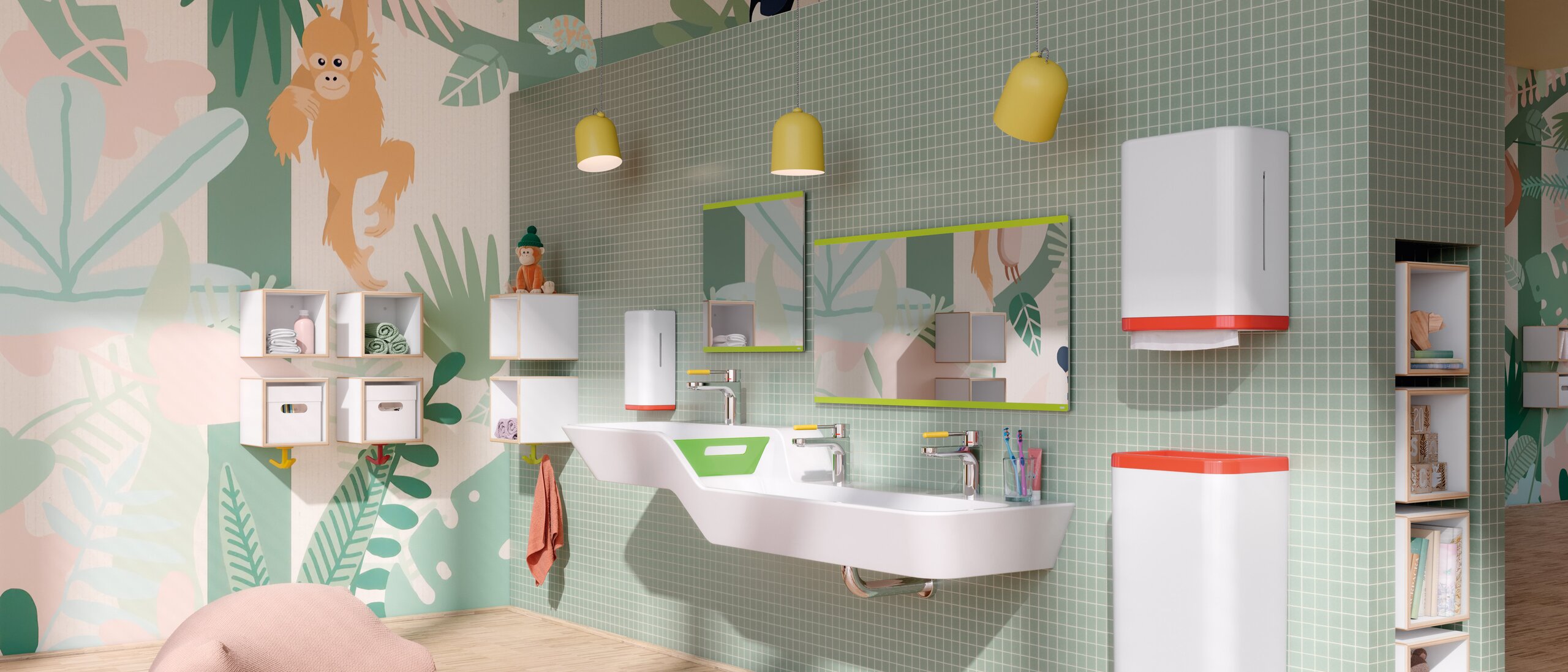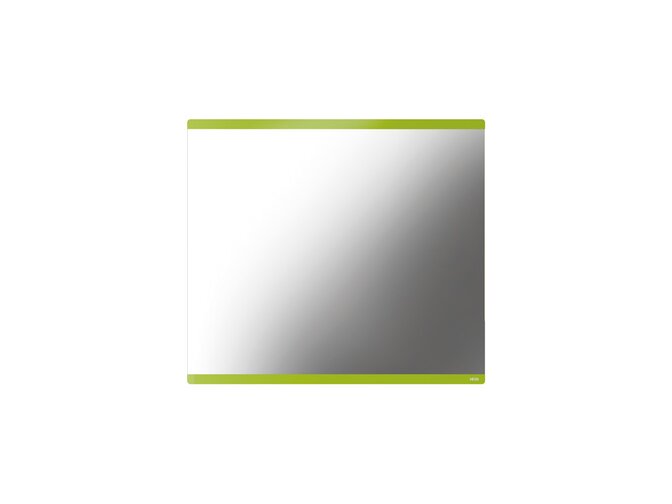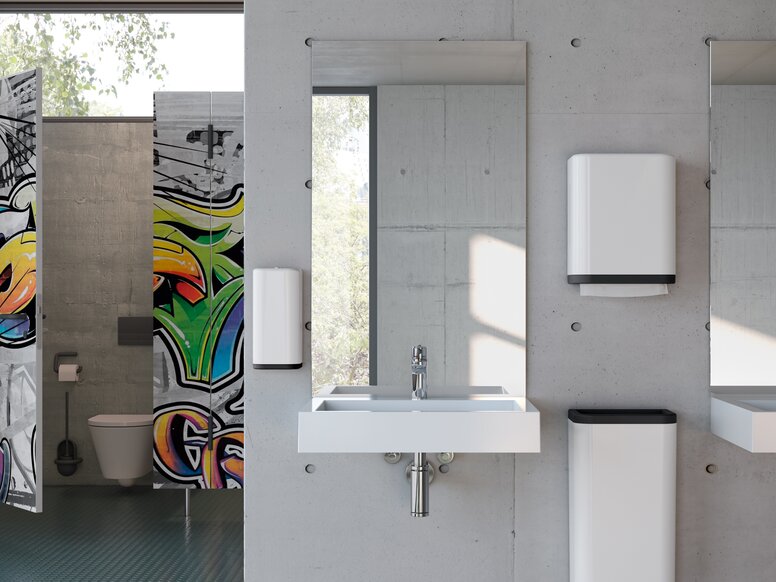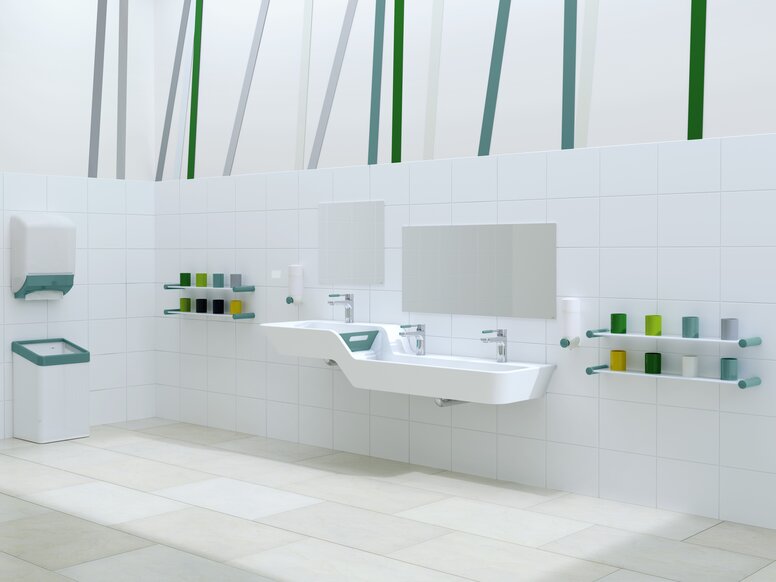HEWI MAG / School and kindergarten
Kindergarten washroom: The child-friendly washing area
Well-designed wash areas encourage children to be independent and enjoy their hygiene rituals. This makes an important contribution toward promoting hygiene awareness and independence. Architects and planners will find valuable information here on the child-friendly design of a kindergarten washroom and on the high-quality solutions from HEWI.
Products for children have to fulfil a variety of requirements: Safe to use, robust and literally child's play. They should also be easy to clean and hygienic.
Washbasins of different heights
Washbasins of different heights are important so that children of different sizes can clean their hands or brush their teeth without any problems. In addition to the single and double washbasins, row washbasins with three and four places now complement the child-friendly sanitary family. Built-in height and depth adjustment perfectly adapts to children's anatomy, reducing the need for additional aids such as stools and increasing safety..
Rounded edges help to make fittings easier to reach. The washbasins are ideal for use in kindergartens and primary schools, as soiling – even from finger paints or acrylic paints – can be removed without leaving any residue.
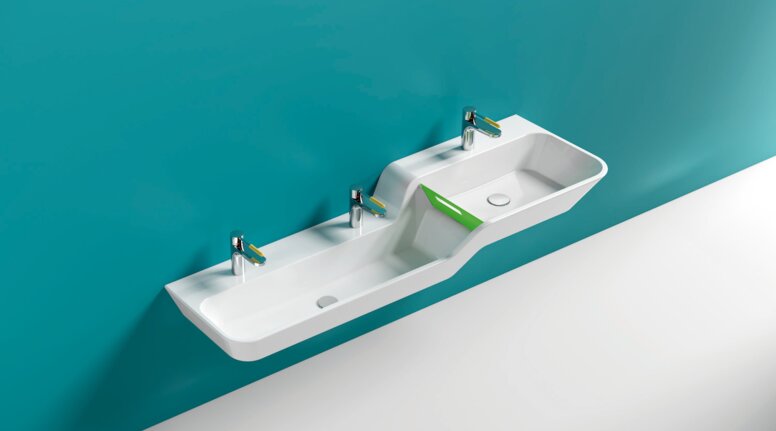
Disease prevention in kindergarten: Promote hygiene
Hygiene in the kindergarten washroom is of paramount importance as children are more susceptible to illness. Easy-to-clean materials such as mineral composite offer smooth, non-porous surfaces that limit the formation of bacteria. Electronic dispensers, such as soap dispensers and paper towel holders, reduce the risk of cross-contamination and are therefore particularly suitable for high-traffic areas. These measures significantly support disease prevention in the kindergarten, as the spread of pathogens is minimised;
HEWI mirror Safe solution at the child-friendly washing area
Mirrors must be safe to minimise the risk of injury. HEWI mirrors made of toughened safety glass offer an ideal solution for this. They have a splinter protection film that binds the splinters in the event of breakage and a safety catch that prevents the mirrors from being removed unintentionally. This significantly increases safety and reduces the risk of injury.
The mirrors, which are available in two sizes, can be ideally combined with the washbasins. There is a coloured border at the top and bottom of the mirrors. The high-contrast design enables better perception and sets colourful accents in the kindergarten bathroom, which helps children to recognise the mirrors more easily and use them correctly.
The child-friendly washing area: Can be extended as required
The child-friendly washing area offers flexible design options that can be adapted to the specific needs and spatial conditions in the kindergarten. A central element here is the tumbler rail, which can be extended by four spaces using add-on modules. This modularity makes it easy to adapt to the number of children and the available space. As an option, the tumbler rail can also be used as a shelf with hooks, which offers additional functionality. The holders are available in pure white, apple green and aqua blue to blend in harmoniously with the colourful surroundings of the child-friendly washbasin.
Ergonomic design and independence
The ergonomic design of the wash areas, which adapt to the height of the children, promotes independence. Children can use the wash areas without aids such as stools, which increases safety. Different fittings also encourage children's fine motor skills by requiring different operating techniques. Further information can be found here: HEWI.
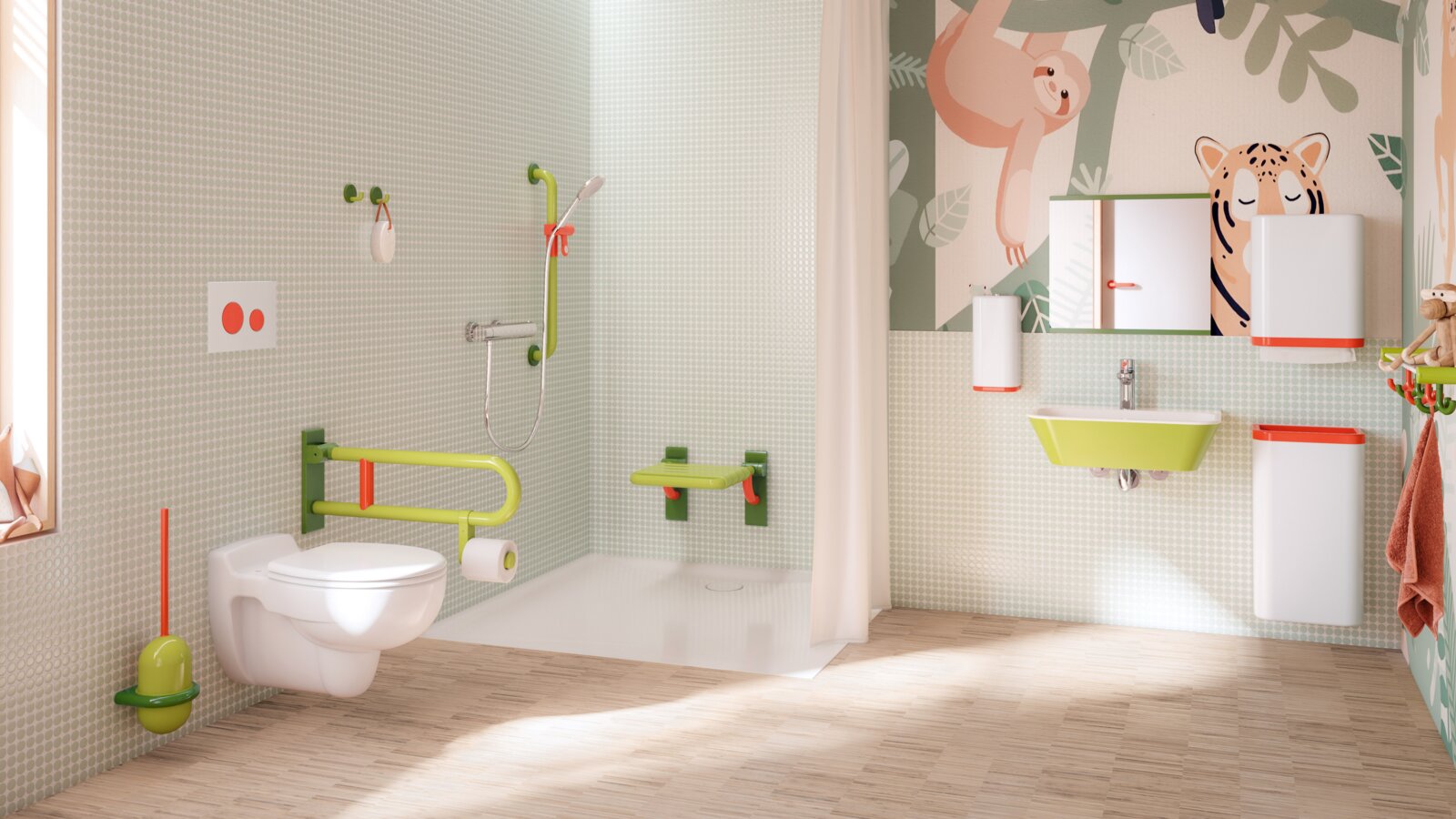
Colour design and motivation
A colourful washing area in the kindergarten not only makes playing more fun. The child-friendly design also promotes learning. Colours such as green and blue have a calming effect and encourage creativity. Colourful accents help the children to orientate themselves better in the room and make the washroom an attractive and motivating place. Child-friendly murals and decorations also help to create a welcoming and inspiring environment.
Safety
Modern composite materials offer a combination of durability and aesthetics. These materials are resistant to scratches, abrasion and moisture and fulfil high safety standards.
Are you looking for furnishing solutions for the renovation or new construction of kindergartens or primary schools? We present four examples of configurations for kindergartens and schools, which are eligible for funding.
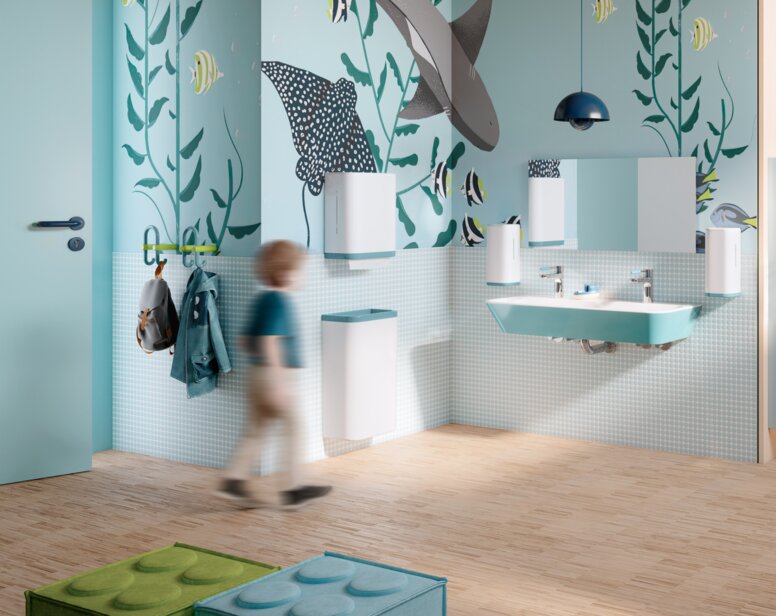
DON'T MISS ANY MORE NEWS!
The HEWI newsletter regularly informs you about exciting topics and news from the building hardware and sanitary sectors. No subscription yet? Then fill in the contact form below now to change this!
